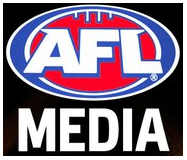How AFL Media became Australia’s biggest sports platform
 In just three years AFL Media has come from nowhere to become the biggest sports platform in the country. Alex Hayes sat down with general manager Peter Campbell and head of commercial Matt Connell to talk about the evolution of the brand.
In just three years AFL Media has come from nowhere to become the biggest sports platform in the country. Alex Hayes sat down with general manager Peter Campbell and head of commercial Matt Connell to talk about the evolution of the brand.
Last December the 116 full-time staff of AFL Media won the right to collectively negotiate with their employer over pay and conditions. That sounds pretty dull, but it was actually a landmark ruling from the Fair Work Ombudsman for two reasons.
Firstly it paved the way for other online news outlets to fall under these kind of agreements. Secondly, it announced the AFL as a proper media organisation which employs independent journalists. And at least 1.9m Australians seem to agree.
 The AFL had tried to claim the employees were communications personnel, but the employees and the Media, Entertainment and Arts Alliance, maintained they were fully independent journalists operating the code’s suite of products which range from the match day magazine The AFL Record to its increasingly popular websites, and producing a range of video content for its own use and that of its sponsors. That position was vindicated in December’s ruling, which may ultimately end up being a boon to the credibility of the organisation.
The AFL had tried to claim the employees were communications personnel, but the employees and the Media, Entertainment and Arts Alliance, maintained they were fully independent journalists operating the code’s suite of products which range from the match day magazine The AFL Record to its increasingly popular websites, and producing a range of video content for its own use and that of its sponsors. That position was vindicated in December’s ruling, which may ultimately end up being a boon to the credibility of the organisation.


Looking forward to all games being broadcast in High Definition.
All 9 games are in HD on Fox Footy
In 10 years, we will be buying the majority of games coverage direct from the AFL, Excepting legislated games and some commercial channel offcuts. The AFL are a smart organisation. Please tread lightly between profit and community.